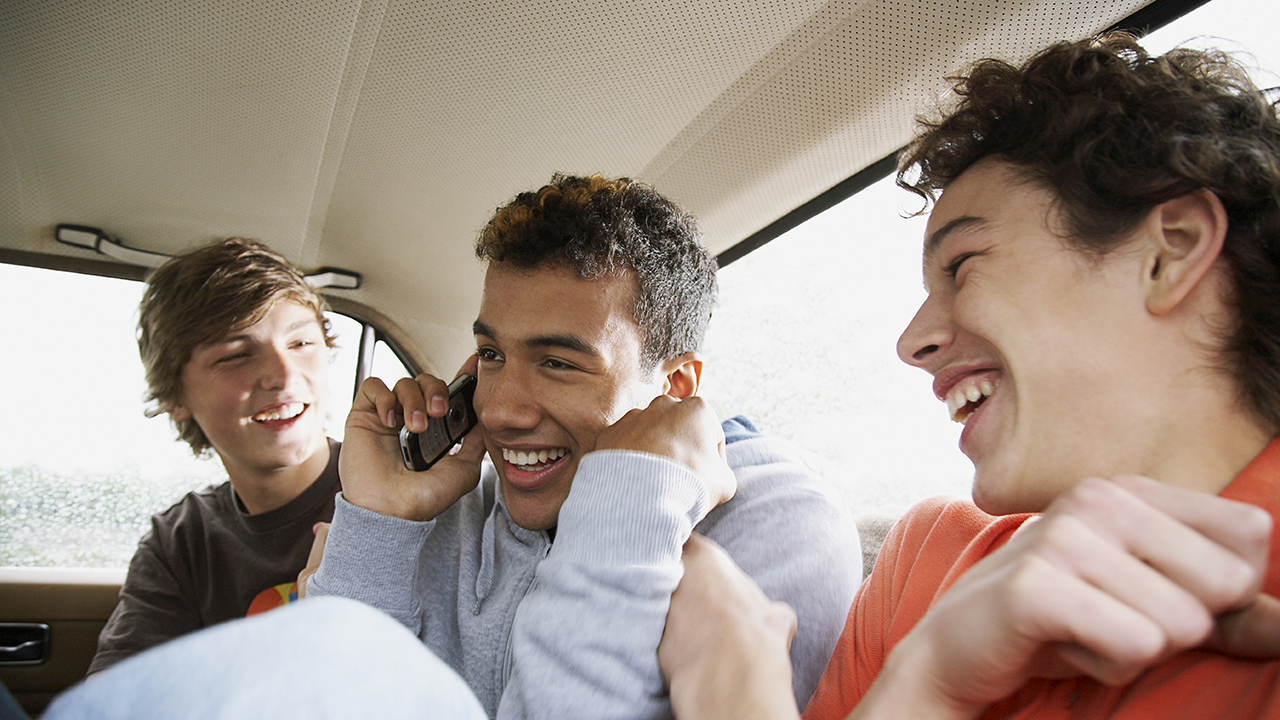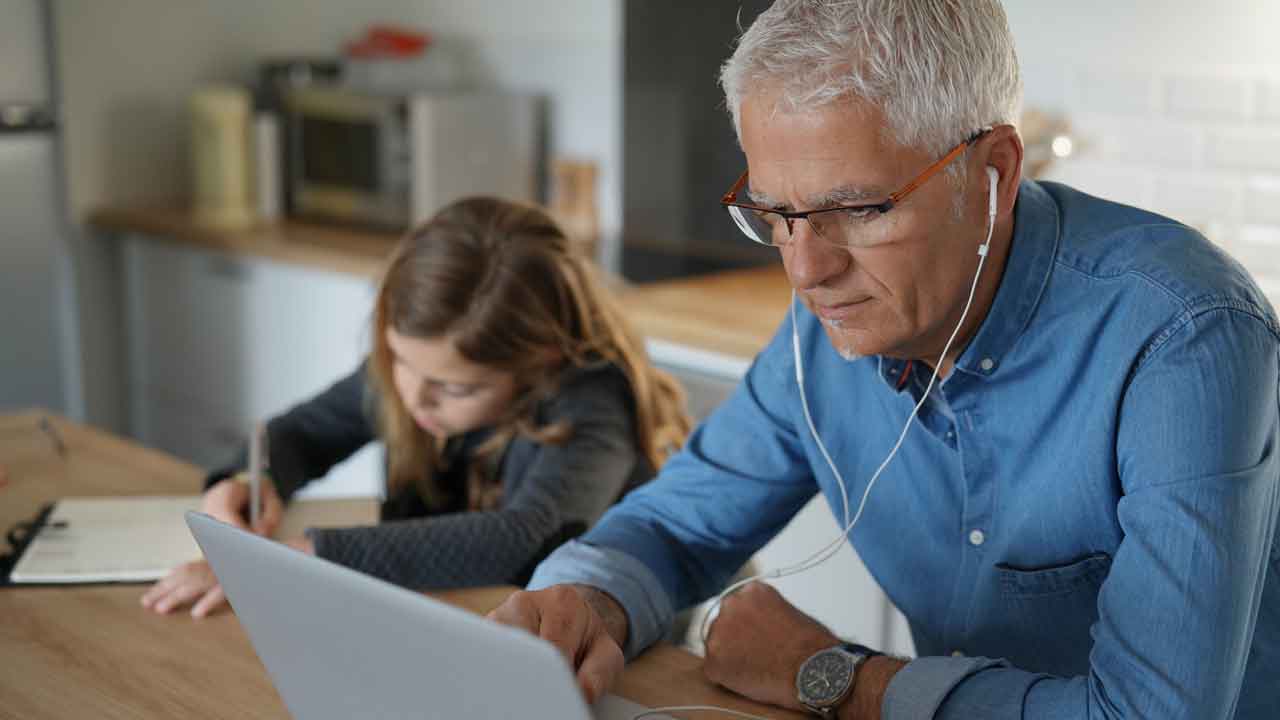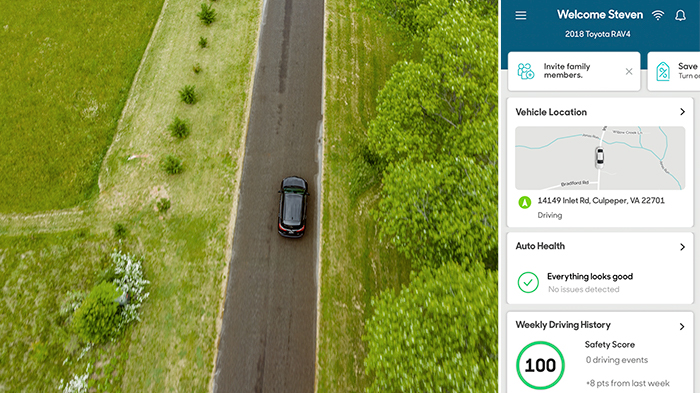
Steven Murphy knows a thing or two about apps and safety. The solutions architect designs applications in Washington, D.C. But even he was skeptical when he first tried Hum by Verizon with his kids.
Then one bike ride changed his mind.
Out riding with his wife Sharon in their hometown of Culpeper, Virginia, Steven noticed police cars, an ambulance and medevac circling over the school where their 18-year-old twins—Jordan and Brayonna—were playing tennis.
“As a parent, I was concerned that maybe something had happened with the kids,” Steven says. He opened the Hum by Verizon app, which allows you to monitor a car’s location and other key statuses remotely, and saw that the twins were nowhere near the scene. “They had already left, and I noticed that they were pretty far away from the high school at that point.
“That’s when I thought, ‘Man, this thing does have some real, practical use,’” Steven says. “Being able to see that immediately, not having to worry about calling them, in case they didn’t pick up the phone—which happens a lot—that was a real plus and real peace of mind.”
Can a teenage driving monitoring device improve teen driving?
New research from the AAA Foundation for Traffic Safety shows that when a teen driver has only teen passengers in their vehicle, the fatality rate for all people involved in a crash increases by 51 percent. That’s why, in recent years, teenage driving monitoring devices like Hum by Verizon have added more features to help develop safer driving habits: Advanced safety measures such as rescue and safety dispatch, notifications when the car needs maintenance, and weekly safety scores are delivered in real time. Research also shows it’s making a difference.
But can Hum help teen drivers develop better driving habits? The Murphy family wanted to find out.
“When I was 16 and I drove with my parents in the car, I drove like a saint,” Steven says. “When I was with my friends, it was a different story.”
“I think it’s the only thing that probably gets me to slow down a little bit,” says Jordan, 18.
GPS tracking for teenage drivers, speeding alerts and more
Hum works much like a fitness tracker and app. A small device plugs into the car’s onboard diagnostics port, often located near the steering wheel, and the app compiles weekly safety scores based on hard braking, speeding, rapid acceleration, and sharp turns. The teen driving app shares real-time vehicle GPS tracking and location. Parents can set speed and boundary alerts and get notified in real time when the vehicle is speeding. It also features calendar reminders for oil changes and maintenance.
After spending 30 days with Hum by Verizon, the Murphys share which features had the biggest impact on their family and their driving habits.

Speed and Boundary Alerts
The parents love it
“You just go into the app and set it at a certain speed limit you want,” says Steven. “Let’s say you set it to 45 mph. Right when you get over 45, it sends a notification to all of our phones that they’ve exceeded this limit.” He finds it particularly helpful for things like insurance, because it’s expensive with twins driving at the same time. “But if we start seeing a pattern,” he says, “we’re able to show either Jordan or Brayonna immediately, ‘Hey, look, you’ve been rolling over the speed limit by this amount, and our insurance might go up, and if it does go up, guess who’s going to pay the difference?’”

Rapid Acceleration
The teens said it made a difference
Jordan says the speed and boundary alerts are helpful. “I think it’s the only thing that probably gets me to slow down a little bit.”
The parents love it
Sharon found the tracking very helpful. “You can always find where they are if they’re out,” she says. If she is concerned about where they are, or if she thinks they should be at a certain point on their way home and they’re not home yet, she can look on the app. “Maybe they’re five minutes away,” she says. “You’re not stressed out.”
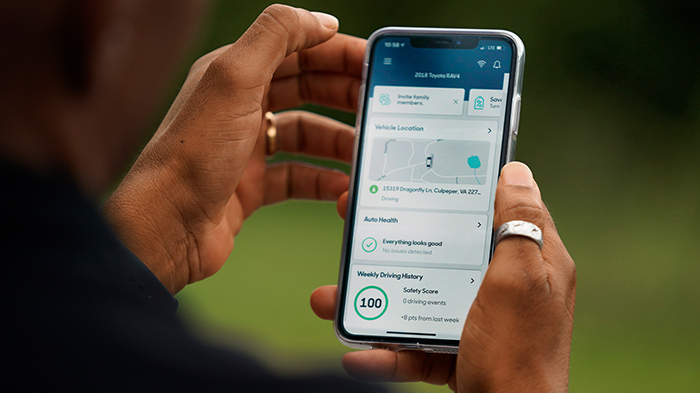
Vehicle Tracking
The teens were skeptical, but know why it’s important
Jordan says he’s not really good at answering the phone while he’s out, and so he sees why it’s good for his parents to be able to occasionally check his whereabouts. “I think it’s an important tool,” he says, but feels it’s also key to respect your teen’s privacy and independence.
Brayonna, on the other hand, wasn’t really bothered by the tracking. “I know I’m not going to be anywhere that I’m not supposed to be,” she says. “Maybe if they used it excessively it would probably start to get on my nerves, but just once in a while is not a big deal.”
The parents were impressed
Steven thought the safety score was pretty useful. “I hadn’t paid much attention to it,” he says, “but when I opened the app and looked at it, I noticed it dropped a few points, from 100 to 90.” He clicked on the app and it actually showed him why the score dropped: hard braking, speeding, rapid acceleration, and sharp turns. “So it really can bust your kid out if you’re asking, ‘Hey, any problems when you were driving?’ he says. “It gives you a real quick view without having to get into the weeds.”
The teens liked being more aware of their driving habits
“For me and for Jordan,” says Brayonna, “I know he does a lot of hard braking, and I know I do a lot of rapid acceleration.” So she realized where she had work to do. “I would want to improve in the future, because I do like seeing that I’m at that 100% safety score. I don’t like getting minus points. It’s like a test for school.”
Jordan thought it was useful, but very nitpicky. “Which is a good thing—if you accelerate fast or you stop too hard or maybe your turn was too sharp.” He says the safety score is good at what it does, “but it really makes you feel like you’re not that good of a driver sometimes.”
Did it change the way the teens drive? Yes.
Hum made Brayonna consciously go slower and not accelerate as much, she says. “Before, we weren’t tracking it, so you didn’t really think about it as much. Now that we have it, it’s really helpful.”
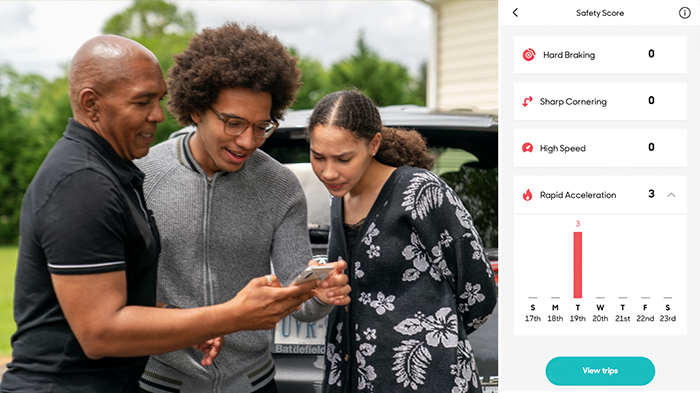
Safety Score
Jordan says he’s now thinking twice before accelerating. “It really can show you that, okay, I need to slow down now,” he says.
Overall, what should parents know about it?
“I definitely think it’s helpful,” says Sharon. “I like being able to find the vehicle when I don’t know where the kids are or if I’m concerned—even though Jordan doesn’t like that.” She thinks it will not only help make them better drivers, but help her talk to the kids more about how to be better drivers and to be safer. “Which is the most important,” she says.
Steven is already thinking ahead to the fall when the kids will be driving in bigger cities. “I do like the technology, and I definitely think that it will help build good habits. But when they head to Northern Virginia and Washington, D.C., later, you have to drive differently than you do on the roads in Culpeper. And rapid acceleration, sometimes you have to do that type of stuff just to survive.”
He thinks it will be interesting when the twins go off to college and are driving different places with their friends. “That’s when we’re really going to see how good this technology is because I know they’re going to drive a lot differently on a Friday after finals than they are on a Friday in Culpeper, Virginia.”
The Murphy family will spend the summer with Hum by Verizon, and we’ll follow up with Part 2 in the fall. Disclaimer: The Murphy family was compensated to share their experience with Verizon.
